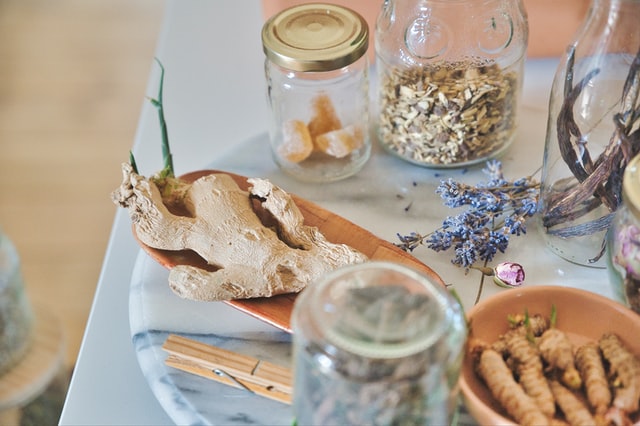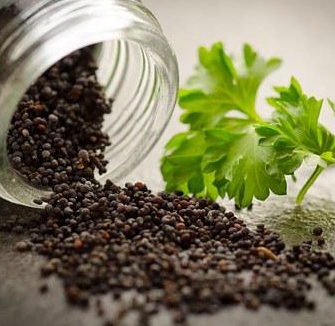
The healing of the body and the construction of a new building share something in common in order to be resilient and long-lasting: tending to a strong foundation.
As herbalists, our foundation is synonymous with our root. It is our root that anchors and grounds us, and also from which we grow and thrive. Our beautiful plant teachers show us that if a root is not healthy or if loving intention and energy is not directed to the root, the plant does not continue to be sustained – it is weak, fragile, and vulnerable to the external elements of its environment.
Our bodies work in a similar way. We can think of tending to our root in three ways – physical, energetic, and spiritual.
Our energetic root is the downward movement of energy in our bodies – it is that energy that brings us a sense of grounding. It is our energetic attachment to the earth, that which makes us feel as though we are stable and have a sense of place. We can tend to this energetic element of ourselves by bringing support and intention into our Root Chakra.
Our physical root is that of physical nourishment in our bodies. If our bodies do not have the essential minerals and vitamins it needs to sustain itself, we become prone to illness, fatigue, and overall dis-ease. It is the goal of healing to bring nourishment back into our bodies, always adding to, not taking away from. Working with nourishing herbs and foods and incorporating supportive lifestyle adjustments can bring us into a state of wellness, and increase overall vitality and life force.
Our spiritual root is our understanding of how we are all interconnected, and our sense of alignment with the earth and nature. When we do such things as communicate with plants, and embrace a sense of reciprocity – giving as much or more than we take from the natural world, being a steward of the land, remembering the power of being in community – we connect to something deeper than ourselves. By tending to our spiritual root, we re-connect and restore balance to a larger sphere of disharmony and displacement from space.

On Nourishment for the Root Chakra
Imagine your spine as a line in which a pathway of energy flows in our physical, emotional, and spiritual bodies. Along this pathway, are different gateways, and the consistent flow of energy through these gateways ensures a state of balance and vitality in our bodies. If a gate is closed, and there is a disruption in this flow of energy, this is where we find ourselves in states of imbalance, which in turn result in emotional distress, lack of connection to self and place, physical dis-ease, or blockages in our spiritual self.
Understanding of these gateways is rooted in the traditional healing of ancient India through such practices as Yoga and Ayurveda, and the gateways themselves are called Chakras. Other cultures around the world also work with similar concepts of energy points in the body, including ancient druidic traditions and Traditional Chinese Medicine, among many others.
In seeking balance in the chakras, we must seek to start with our foundation as well. The first chakra is known as the Root Chakra, and is named in Sanskrit as Muladhara, which means, “base, root, or foundation.”

It is this energy point that grounds us, better brings us in tune with our authentic self, is the foundation of our physical, emotional, and spiritual wellness, and brings us to our sense of place. When we do not address energetic blockages of the root chakra we find ourselves in heightened states of anxiety or emotional distress, feeling a sense of unknown purpose, and are prone to physical dis-ease.
A beautiful way to support the root chakra is to sit or walk upon the earth. As we do so, it is also good to practice visualization, such as envisioning an energetic root extending from the base of your spine and extending roots deep into the earth below us. This helps us to connect to the energy of place, the downward energy of groundedness, and connects us to the very essence of the earth.
Herbal supports for the root chakra are those that are grounding and warming. Think of herbs that bring a sense of calm or comfort or a sense of safety. Balance in our root chakra is seeking to ensure that our basic needs are met, and that we feel secure. Call upon the support of herbs such as cinnamon, ginger, cayenne, or turmeric. Additionally, working with actual root herbs is another way to bring nourishment to the root chakra, as roots embody the downward movement of energy that comes with groundedness. Seek roots that are nourishing such as dandelion root, or burdock.
Want to learn more about support for the Root Chakra? Check out our previous post here!
Herbalism for our Physical Root
When we think of our physical root, we can think of what our body needs at a foundational level for optimal vitality.
If we are not providing our body with the vitamins and minerals it needs to thrive, we will experience disharmony. We may feel sluggish, be prone to illness, or have disruptions in our functions.
As herbalists, when looking for healing, we must first start with nourishment of the body. Healing is about adding to, not taking away from. This means that instead of seeing our bodies as something to be cleared of toxins, or inherently bad, we should see our bodies as a gift that we want to tend to. By flooding our body with nourishment, we build the foundation for our healing and optimal vitality.
It’s important to remember that healing is not linear, and that tending to our root is a consistent process. Just as we must provide sustenance for our bodies each day, bringing nourishment to ourselves is also a regular practice. This ensures we stay grounded and in balance.
Herbalism for nourishment also returns us to that which is wild and sacred. Nourishing herbs bring us back to the earth, and remind us of our harmony with that natural world; this is because the herbs that are most nourishing are inherently wild themselves. Nourishing herbs have the following key characteristics: They are wild and abundant – easy to find and grow, often even being classified as weeds, they tend to be incredibly safe (though of course it is always recommended to seek consultation from a trusted medical professional prior to working with herbs), and they are packed full of vitamins and minerals that our body needs for sustenance. The beauty of nourishing herbs is that they are so accessible, a true gift from nature!
Nourishing herbs can (and are encouraged to!) be incorporated into your daily routine. These herbs are also referred to as “tonic” herbs, meaning they support our internal life force and daily function of our bodies as a whole. Nourishing herbs include such allies as dandelion (leaf and root), chickweed, nettle, red raspberry leaf, oat straw, and burdock.

Nourishing our Spirit
The last element of our root that we will discuss is that of our spiritual root. In a way, nourishment of our spiritual root extends a bit beyond ourselves. As human beings, we all hold ancient ties within us that connect us back to being in community. We are social beings, and thrive best in the support of others, and when we can return the support back.
When we contribute to our community, we bring healing not only to ourselves, but to our collective whole. We heal the bonds that have been fragmented, and through this repair and remember what it means to be part of oneness and wholeness.

The spiritual essence of our root is the awareness of our interconnectedness, and that we are not separate from the collective whole. By adopting an intentional community-centered approach, by supporting our neighbors, we nourish our spiritual root. And remember of course that our community extends beyond that of our fellow humans, but to the plants and animals as well. We live in harmony when we choose to live in reciprocity with our natural world.
And you have to admit, when you sing to the plants, you feel that connection in your soul.
Thank you for reading, dear community, and if you have any questions about how to further bring nourishment into your healing journey, please don’t hesitate to reach out, as we have several means of support for you!
Sources:
Golden Poppy Herbal Apothecary “Working with the Root Chakra.” Retrieved from: https://goldenpoppyherbs.com/working-with-the-root-chakra
Browse by category
- Aromatherapy
- Astrology & Magic
- Ayurdeva
- Botany Foraging & Gardening
- Chakras
- Digestion
- Earth Connection
- Energetics
- Flower & Gem Essences
- Folk Traditions
- Herbalism & Holistic Health
- Immune Support
- Materia Medica
- Mushrooms
- Nutrition
- Seasonal Living: Autumn
- Seasonal Living: Moon
- Seasonal Living: Spring
- Seasonal Living: Summer
- Seasonal Living: Winter
- Skin & Body Care

Don’t Miss a Thing!
Enter your email below to be the first to know about sales, new products and tips for taking care of your pieces.

